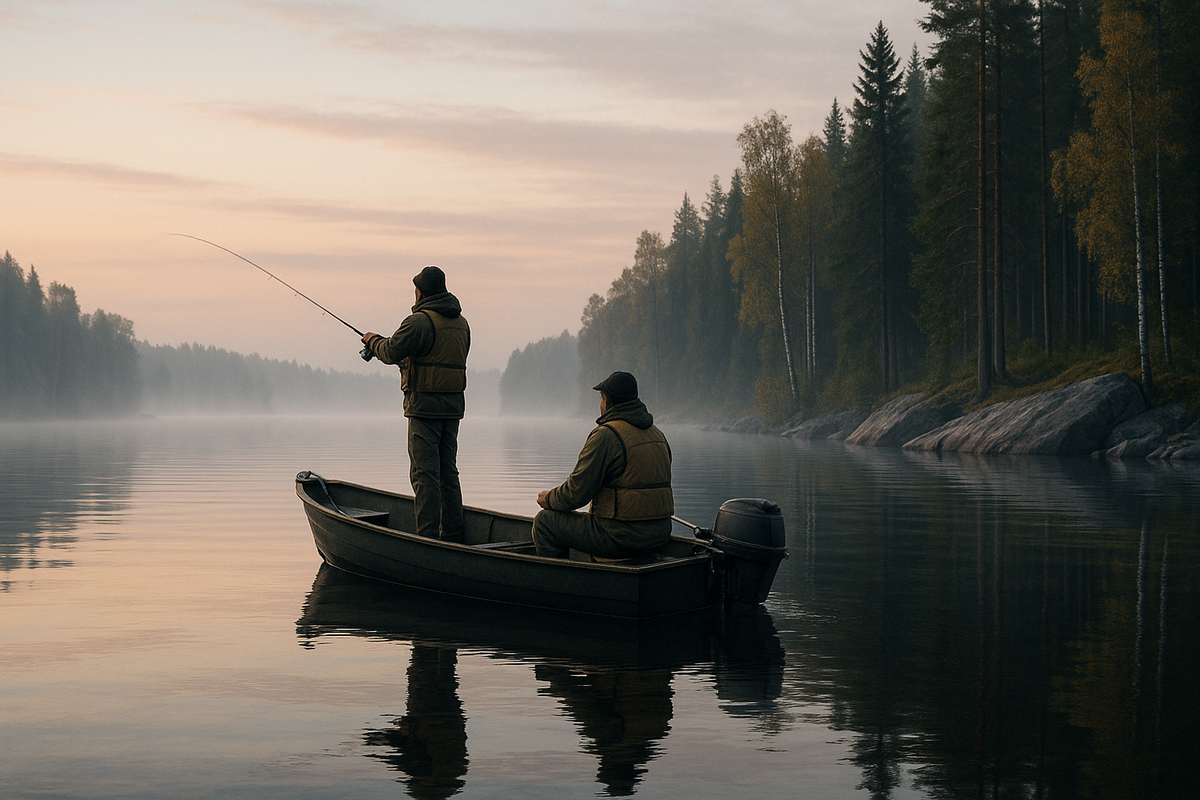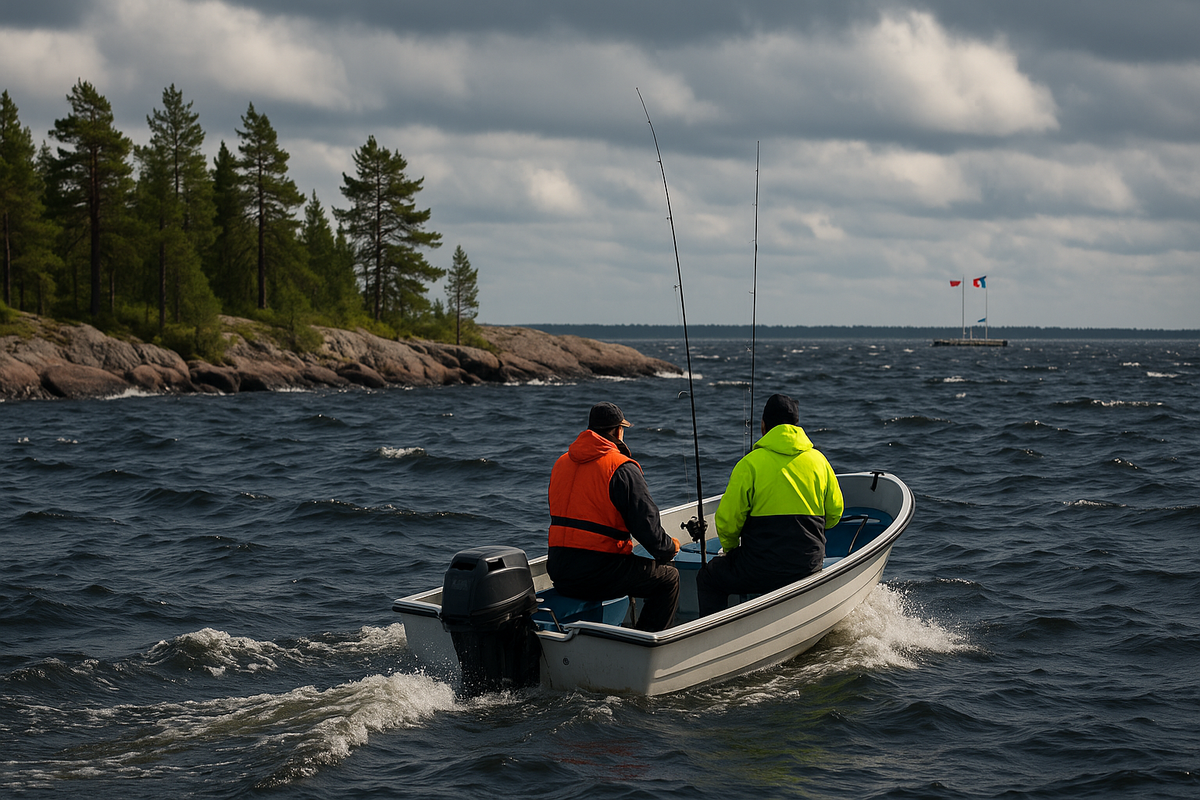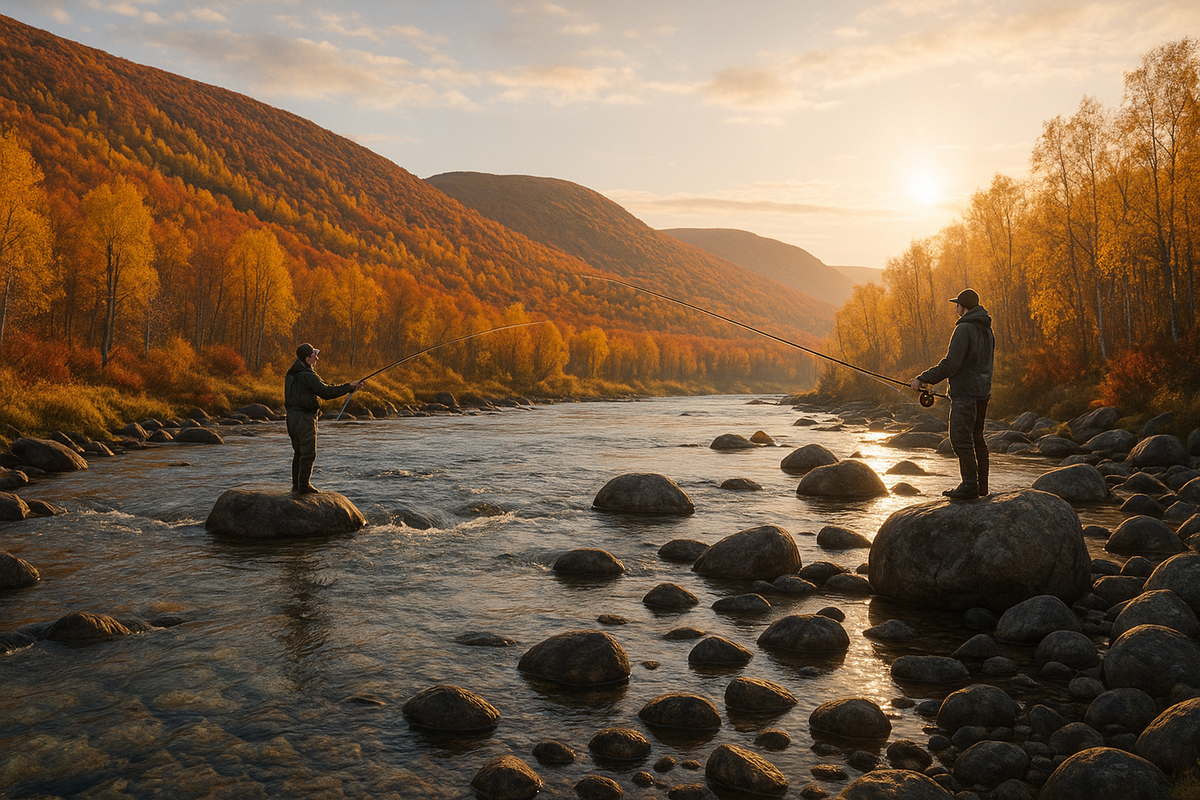🎣 Seasonal fishing in Finland: Saimaa, Gulf of Bothnia, Lapland
You already have a rough idea of the weather and seasons in Finland: where it is warmer, where it is windier, when the water in the lakes warms up, and when the Baltic Sea can be rough. The logical next step is the question: "How can I combine all this with fishing so that I don't end up sitting with a dead lure in the icy wind?"
Finland is a country where fishing goes hand in hand with summer by the water, the Saimaa lake district and winter scenes in Lapland. But if you come at random, you might end up in a week when the pressure's all over the place, the water's cooled down a lot, and the wind's doing everything for you. This article isn't a list of "secret places", but rather a clear logic: which seasons and regions are friendly to which types of fish, what wind limits to set for yourself on lakes and in the Gulf of Bothnia, and how to make decisions based on forecasts rather than luck.

Who, where and when: an overview by species and region
Super simplified:
● Saimaa and the lake region — pike, perch, zander, calm waters and summer/autumn;
● Gulf of Bothnia and the west coast — sea salmon, sea trout, cod in some areas, stronger wind influence;
● Lapland — rivers and lakes with grayling, trout, Arctic char, plus winter ice fishing.
Let's summarise this in a table for easy reference.
This is not dogma, but a mood map: pike and perch love their windows on the lakes, salmon live by different rules at sea, and grayling in Lapland wake up when the rivers thaw and normal water levels return.
Saimaa and the lake region: pike, pike perch and "still waters"
The lake region is exactly what you imagine when you picture the surface of the water, a house on the shore and a boat at the pier. Here it is important to understand the combination of water temperature + season + weather for a couple of days in a row.
● Spring (after the ice melts) — it's cold, but it can be very interesting for pike and large perch;
● Summer (especially the second half) — warm water, the perfect backdrop for family fishing and evenings on the pier;
● Autumn (September–October) — clear, cooler, a good time for a more "sporting" mood.
A simple wind scale works well for lakes:
Wind & lakes – comfort guide
- 0–3 m/s: almost glassy, easy rowing, great for beginners & kids
- 4–6 m/s: still ok in sheltered bays, stay closer to shore
- 7–9 m/s: choppy water, better to fish from shore or choose protected coves
- 10+ m/s: avoid open water, switch to land-based plans
If you read forecasts not only in terms of "sunshine/rain", but also look at the wind and FMI warnings for lakes, you quickly get the feeling: "Today — distant points, tomorrow — only a quiet bay and barbecue."

The Gulf of Bothnia and the west coast: the wind decides everything
The west coast and the Gulf of Bothnia are a different story. Here you have the sea, decent fetch for waves and the influence of fronts. Even if you've read about the west coast and "it feels like", when fishing at sea, this phrase takes on a whole new meaning.
The main factors are:
● Wind strength and direction — in open areas, this is the main "director";
● Waves and swell — these can greatly interfere with fishing, even in seemingly tolerable winds;
● Fog and visibility — especially important if you are not very confident in your navigation skills.
For coastal recreational fishing (boat, small motorboat, kayak), you can use the following guidelines:
● comfortable conditions are often in the range of up to 6–7 m/s with a clear wind direction;
● anything higher than that is a matter of experience, the right hull, life jackets and a willingness to turn back if conditions become uncomfortable.
The combination of the sea forecast and FMI warnings is particularly important here. If there is a wind/wave warning, it is not the day to take your children out on the bay for the first time.
Lapland: grayling, trout and snow underfoot
In Lapland, fishing is on par with what you have already seen in the article Lapland by season: long days in summer, kaamos and the northern lights in winter, ruska in autumn.
● Summer (June–August) — rivers after the flood, normal water levels, comfortable +10...+20 °C during the day, grayling and trout are active;
● Autumn (September) — beautiful, cool, clear water, the start of cooling;
● Winter — ice fishing: daylight hours are short, temperatures are lower, but the ice provides a different experience.

The weather here is different: there is a higher risk of sudden cold spells, strong winds in open areas and rapid changes in conditions. Therefore:
● do not plan long trips on the ice without information about its thickness and routes;
● keep an eye out for warnings about thaws and rain in winter (they damage the ice more than just frost);
● choose shorter sessions and warm breaks, especially if you have children with you.
The weather as your ally: pressure, cloud cover and fronts in human terms
We won't turn this article into a meteorology textbook, but there are a couple of things worth keeping in mind:
Simple weather signals for fishing
- Stable weather 2–3 days: fish behaviour is more predictable, good planning background.
- Just before a front: there may be active bite windows, but also more wind & changing conditions.
- Right after a strong front: fish may “shut down” for a while, focus on exploring & learning spots.
- Light overcast: often more comfortable than harsh sun, both for you and for fish.
The main idea: look not only at "tomorrow," but also at "yesterday-today-tomorrow." If there are fronts and jumps for three days in a row, don't be surprised by the strange behaviour of the fish. If the weather is stable for two days and then changes gently, this is often the best background for a trip.
Safety and children: life jackets are a must
Fishing is a great way to introduce children to Finland, whether it's a lake pier on Saimaa or a quiet river in Lapland. But the water and weather here are no joke.
Safety must-haves on water
- Proper PFD (life jacket) for everyone on a boat, especially children
- Check local rules, licences and restrictions before fishing
- Respect FMI warnings about wind, storms, ice and visibility
- Never underestimate cold water – short distances can still be dangerous
For children:
● only in life jackets, even on a "simple" pier;
● short sessions of 30–60 minutes with warm breaks;
● no experiments with kayaks/boats at the "limit" of the wind — better to stay on the shore and use a float.
Quick checklist for a day of fishing (for the average tourist)
It doesn't matter if you're in Saimaa, the Gulf of Bothnia or a small city bay — the list of things you need is surprisingly similar.
Day fishing checklist in Finland
- Valid fishing permits / licences (national fee + local if needed)
- Layered clothing, wind- and waterproof outer layer
- Hat, buff, light gloves (even in cool summer wind)
- PFD for each person on board, especially children Drinking water, snacks, hot drink in a thermos in colder seasons
- Phone in a waterproof pouch + power bank Basic first aid & after-bite cream for insects
- Plan B on land if wind or storms get stronger than expected
You can get half of this list together in 10 minutes flat – and then you won't have to go back to shore because someone's cold, wet or their phone's battery's died.
When it comes to fishing in Finland, it's not just about bagging the big ones. It's about the mist on the lake in the morning, kids counting perch, tea from a thermos in the rain, the unexpected calm on the Gulf of Bothnia, and evenings when the fish didn't bite, but the cottage, sauna and silence still made the day.
The weather here can be a bit unpredictable, which makes it all the more interesting. When you start seeing wind, weather fronts and seasons as allies, your trips become more relaxed and you find yourself hitting "the sweet spot" more often.
Let us know in the comments where you think your first (or next) fishing trip in Finland should be: the Saimaa lake district, the west coast and the Gulf of Bothnia, or Lapland with its white nights and snow? What wind limits do you think are comfortable for yourself, and what stories have you had – good or bad? You'll be helping others not only catch their fish, but also deal with the Finnish weather.
FAQ
Often, the most interesting periods are late spring (after the ice has melted and spawning is over, when the water has warmed up a bit) and autumn (September–October), when the water cools down and the fish stay at certain depths. You can also fish in the summer, but then the emphasis is more on the morning and evening hours and choosing the right depth
Ice fishing is a world of its own. With normal ice thickness and the right clothing, it is more about calmness and meditation than extreme sports. But you need to respect the ice: do not go out without information about its condition, do not ignore thaws, and always have warm clothes, a thermos, and a plan for quick evacuation to warmth
In Finland, you almost always need some kind of permit: a state fee for spinning/trolling, local licences for specific areas, special rules for salmon rivers. The most practical way is to check the current requirements on official Finnish resources and with the cottage owner, boat rental company or tour operator.
For most tourists, the comfortable range is up to 5–6 m/s with a clear wind direction and fishing close to the shore. Anything higher than that requires experience, a good boat, confident technique and a willingness to turn back home. If in doubt, err on the side of caution
Yes, if you don't try to replicate the adult scenario exactly. For children, it is better to have short sessions from the pier or from a boat wearing life jackets, in calm weather, not far from the shore, and with the emphasis not on the catch but on the process: feeding the fish, looking at what's under the water, learning how to hold a spinning rod.
Light or moderate rain is often not a problem at all, especially in summer and in the off-season with the right clothing. Thunderstorms, showers with wind, and a combination of rain and cold wind are a big hindrance. In this case, it is better to switch to plan B: a shorter session, a more sheltered location, or postponing to another day.
Check the wind, precipitation and warnings for the area you need: wind for lakes and the sea, thunderstorms in summer, snow and ice in winter. Set your thresholds for wind, waves and temperature, and then compare not "good/bad", but "which scenario is suitable for this weather".
The shoulder seasons are often more advantageous: late spring, September, part of late autumn and non-peak winter. Lapland is cheaper outside of New Year's and the February holidays, the lake region is cheaper outside of peak summer, and cities with nearby fishing spots can be pleasantly surprising during the off-season.





0 comments
Log in to leave a comment